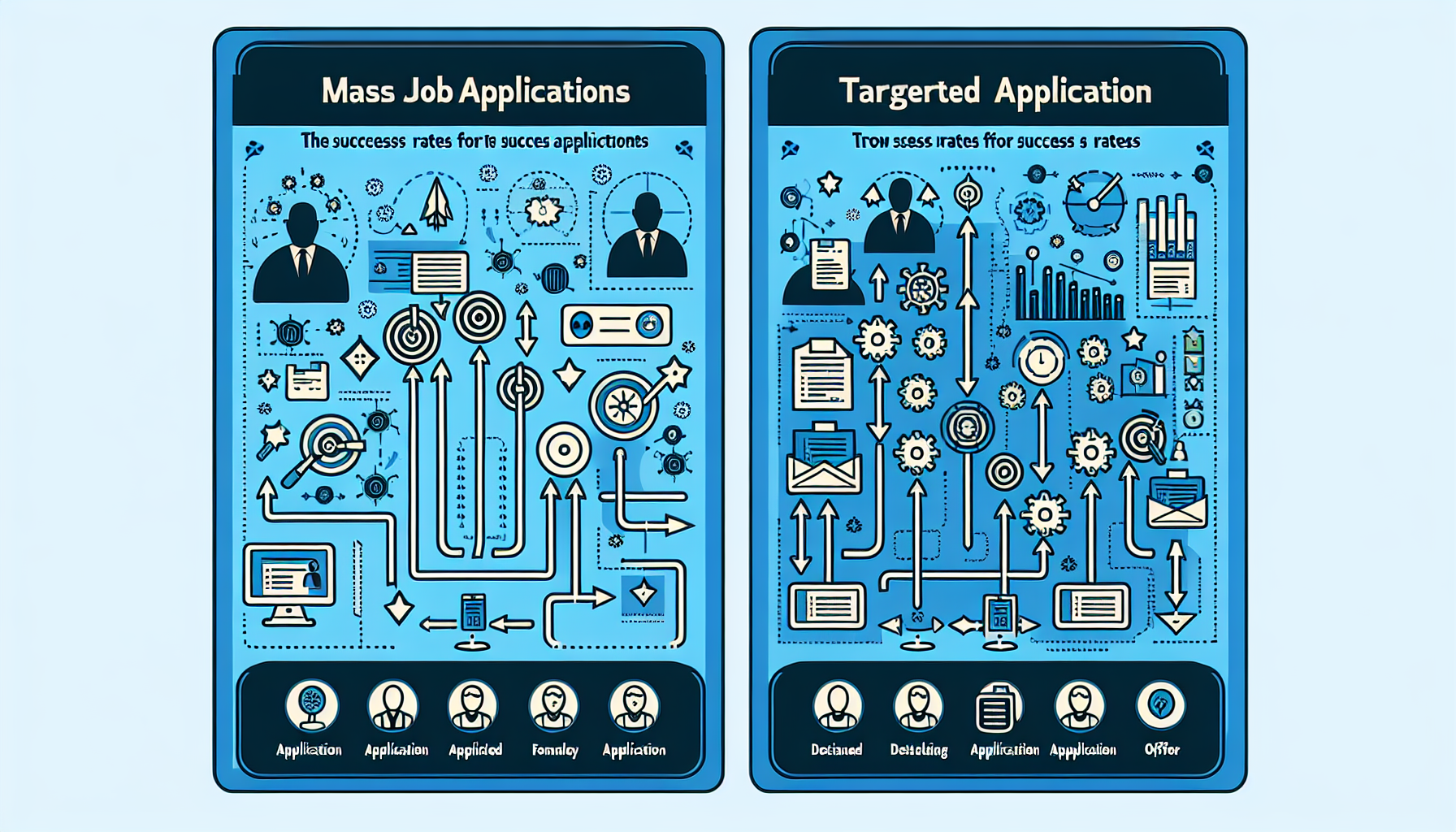Quality Over Quantity: A Smart Strategy for Job Applications in 2024
Meta: Discover why focusing on targeted, well-researched job applications yields better results than mass applications. Learn proven strategies for landing your dream job in 2024.
Did you know that according to recent studies, job seekers who submit more than 10-15 applications per week actually decrease their chances of getting hired by 46%? I’ve seen countless professionals exhaust themselves with the ‘spray and pray’ method, only to face rejection after rejection. The truth is, in today’s competitive job market, quality truly trumps quantity when it comes to job applications. Let me show you why being selective and strategic is your ticket to landing that dream position!

Understanding the Problems with Mass Applications
Let’s talk about why sending out tons of job applications might not be the best strategy. You know how they say “quality over quantity”? Well, it definitely applies here.
First off, when you’re firing off applications left and right, you’re more likely to make mistakes. It’s like trying to juggle too many balls at once – eventually, you’re going to drop one. Maybe you forget to change the company name in your cover letter, or you accidentally send the wrong version of your resume. Oops!
Then there’s the issue of customization. Each job is unique, right? But when you’re mass applying, you’re probably using the same generic application for everything. It’s like trying to fit a square peg in a round hole – it just doesn’t work as well.
And let’s not forget about burnout. Applying for jobs can be exhausting, and doing it en masse can really take a toll on your mental and emotional health. It’s easy to get discouraged when you’re not seeing results.
Finally, employers can often tell when you’ve sent a mass application. And guess what? They’re not impressed. This leads to lower response rates, which can be really disheartening.
The Psychology Behind Selective Job Applications
Now, let’s flip the script and talk about why being more selective in your job applications can actually be a good thing.
When you’re focusing on a smaller number of applications, you’re naturally more motivated and focused. It’s like the difference between studying for one important exam versus trying to cram for five at once. You can really give it your all.
Plus, when you’re being selective, you’re more likely to apply for jobs that truly align with your career goals. This isn’t just good for now – it’s great for your long-term career trajectory.
Here’s a cool side effect: being selective can actually boost your confidence in interviews. Why? Because you’ve done your homework and you know why you want this specific job. That enthusiasm and knowledge really shines through.
And let’s not forget about stress. Applying for jobs is always going to be a bit anxiety-inducing, but when you’re not overwhelmed by the sheer number of applications, it’s much more manageable.
Key Elements of a Quality-Focused Application Strategy
Okay, so we’ve established that quality beats quantity. But what does a quality application strategy actually look like?
First up: research, research, research. You want to know the company inside and out. What are their values? Their recent projects? Their challenges? This knowledge will help you tailor your application and stand out from the crowd.
Speaking of tailoring, that’s our next key element. Your resume and cover letter should be customized for each position. It’s like wearing a tailored suit to an interview – it just fits better.
Networking is also crucial. Try to make connections within the company or industry. Maybe you know someone who knows someone? These insider connections can give you valuable insights and maybe even a leg up in the application process.
Finally, don’t just fire and forget. Keep track of your applications and follow up. It shows initiative and keeps you on the employer’s radar.
How to Choose the Right Opportunities
Now, let’s talk about how to pick the right jobs to apply for. It’s not just about finding openings – it’s about finding the right fit.
Start by really analyzing the job description. Does it align with your skills and experience? Are you excited about the responsibilities? If you’re not at least 70% qualified, it might be best to keep looking.
Next, consider the company culture. This is where you’ll be spending a big chunk of your time, so it needs to be a good fit. Look at their website, social media, and employee reviews to get a sense of what it’s like to work there.
Don’t forget to think about potential for growth. Is this a dead-end job, or could it lead to exciting opportunities down the line?
Lastly, evaluate the salary and benefits. Remember, your time and skills are valuable. Make sure the compensation package aligns with your needs and industry standards.
Maximizing Your Success Rate
Alright, let’s wrap this up with some strategies to really boost your chances of landing that dream job.
Timing can be everything. Try to submit your application early in the hiring cycle if possible. Many recruiters start reviewing applications as soon as they come in.
Customize your approach based on your industry. A creative application might work great for a marketing role, but could be off-putting for a more traditional financial position.
Make sure your personal brand aligns with the job you’re applying for. Your online presence, portfolio, and application materials should all tell a consistent story about who you are professionally.
Finally, don’t underestimate the power of a good follow-up. A polite email or call can keep you top of mind and demonstrate your genuine interest in the position.

Conclusion
Wrap up with success statistics of quality vs. quantity approaches, emphasizing long-term career benefits. Include a call to action encouraging readers to implement the strategy immediately.




